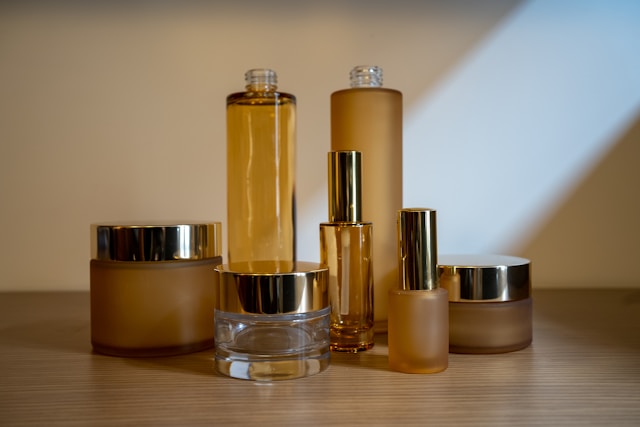
Standard 16128 - Calculation of naturalness for cosmetics
Consumer awareness is growing, and with it the popularity of cosmetics described as natural. However, the word 'natural' itself is not unambiguous and is often interpreted in different ways. This is why the ISO standard 16128which is used to assessing the naturalness of cosmetic ingredients and finished cosmetic products. It is designed to provide a coherent, transparent and unified approach to declarations of 'naturalness' and 'natural origin'.
What is ISO 16128 and why does its use matter?
ISO Standard 16128 was developed to create a common language for determining the naturalness of cosmetics. It provides precise guidelines on how to calculate the percentage of natural ingredients and natural origin in a cosmetic formulation.
ISO Standard 16128 is not a mandatory legal requirement. Its use is voluntary, but more and more manufacturers are turning to it to clearly communicate the composition of their products. Naturalness calculations according to this standard allow consumers to be reliably informed, although they do not constitute unequivocal legal proof of a product's 'naturalness'.
Natural ingredient vs. ingredient of natural origin - basic difference
For a proper understanding of enumeration according to the standard, it is crucial to distinguish between two terms:
- Natural ingredient - an ingredient obtained from plants, animals, micro-organisms or minerals by physical, enzymatic or microbiological processes without chemical modification of the structure.
- Ingredient of natural origin - an ingredient obtained from natural raw materials (plant, animal, micro-organism or mineral) by means of a chemical reaction in which the basic chemical structure has been modified.
Examples:
- Cold-pressed jojoba oil - natural ingredient.
- Coco-Glucoside (a derivative of sugars and coconut oil) - an ingredient of natural origin, derived from sugars and fatty alcohols.
It is worth remembering that even if an ingredient has a natural source, too much chemical processing causes it to cannot be considered 'natural' according to Standard 16128.
Practical examples of component classification according to ISO 16128
Some common ingredients and their classification:
- Shea butter - natural ingredient (mechanical pressing, filtering, possibly gentle purification without chemicals).
- Lavender oil - natural ingredient (pressing or distillation)
- Vegetable glycerine - an ingredient of natural origin (derived, for example, from vegetable oils).
- Lauryl Glucoside - an ingredient of natural origin (obtained by reacting glucose (e.g. from maize) with lauryl alcohol).
- Paraffin - synthetic ingredient (petroleum derivative).
Standard 16128 ascribes to each component the so-called naturalness index, which is taken into account when calculating the percentage of natural ingredients in a product.
Values are assigned for each component:
- NI = 1 → natural ingredient
- NI = 0-1 → ingredient of natural origin
- NI = 0 → synthetic component
What are the main differences between natural and naturally derived ingredients?
Natural ingredients:
- virtually unprocessed,
- retain their original properties,
- Examples: plant oils, floral waters, plant extracts.
Ingredients of natural origin:
- come from nature, but require chemical reactions,
- may have different properties to the starting raw material,
- Examples: vegetable surfactants, esters, emollients of natural origin.
Awareness of this difference helps to understand that natural cosmetic may contain ingredients with different levels of naturalness.
The most common mistakes consumers make when assessing the naturalness of cosmetics
Many consumers equate the name of an ingredient or the label of a product with its true composition. Common mistakes include:
- the belief that a product labelled 'bio' or 'eco' is 100% natural,
- Lack of distinction between naturalness and natural origin,
- omitting analysis of INCI composition.
Reading labels and knowledge of basic concepts becomes indispensable if we want to make an informed choice of products.
Benefits of ISO 16128 for cosmetics manufacturers
Use of ISO 16128 standards brings many benefits to producers:
- Transparency - reliable information on the level of naturalness of the product.
- Distinction in the market - the opportunity to communicate with increasingly aware consumers.
- Greater reliability - the use of standardised standards increases trust in the brand.
- Easier recipe design - calculations help to maintain a high percentage of natural ingredients in the finished product.
With calculations based on standard 16128 both the composition and marketing strategy of cosmetics can be better planned.
See also: Registration of cosmetics.
Is the ISO 16128 standard enough to speak of a natural cosmetic?
ISO 16128 is a helpful tool, but it does not determine the naturalness of a product in a legal context. This means that it has no legal force and does not regulate labelling or define 'naturalness' in the legal sense in the European Union.
It is the manufacturer who is responsible for how he presents his cosmetic and what information he includes on the label. Therefore, even a high percentage of natural ingredients does not give an automatic right to use the labels 'natural' or 'organic' without meeting additional requirements.
In practice, this means that both consumers and producers should use the standard as a support, but always be cautious in their interpretations.
If you want to create cosmetics in line with ISO 16128 standard and reliably communicate their composition, contact MPR-Labs cosmetics laboratory.